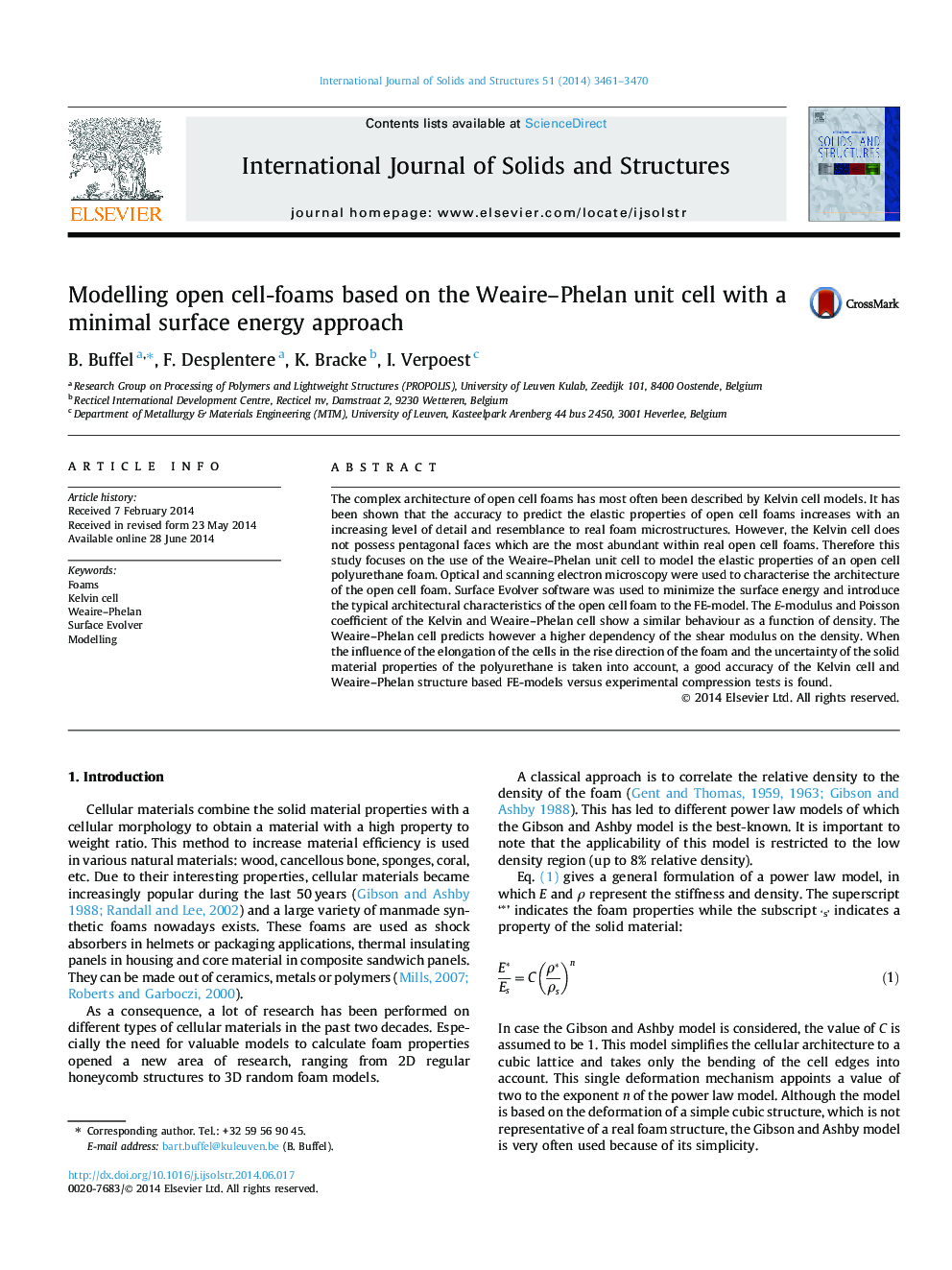| Article ID | Journal | Published Year | Pages | File Type |
|---|---|---|---|---|
| 6749074 | International Journal of Solids and Structures | 2014 | 10 Pages |
Abstract
The complex architecture of open cell foams has most often been described by Kelvin cell models. It has been shown that the accuracy to predict the elastic properties of open cell foams increases with an increasing level of detail and resemblance to real foam microstructures. However, the Kelvin cell does not possess pentagonal faces which are the most abundant within real open cell foams. Therefore this study focuses on the use of the Weaire-Phelan unit cell to model the elastic properties of an open cell polyurethane foam. Optical and scanning electron microscopy were used to characterise the architecture of the open cell foam. Surface Evolver software was used to minimize the surface energy and introduce the typical architectural characteristics of the open cell foam to the FE-model. The E-modulus and Poisson coefficient of the Kelvin and Weaire-Phelan cell show a similar behaviour as a function of density. The Weaire-Phelan cell predicts however a higher dependency of the shear modulus on the density. When the influence of the elongation of the cells in the rise direction of the foam and the uncertainty of the solid material properties of the polyurethane is taken into account, a good accuracy of the Kelvin cell and Weaire-Phelan structure based FE-models versus experimental compression tests is found.
Related Topics
Physical Sciences and Engineering
Engineering
Civil and Structural Engineering
Authors
B. Buffel, F. Desplentere, K. Bracke, I. Verpoest,
